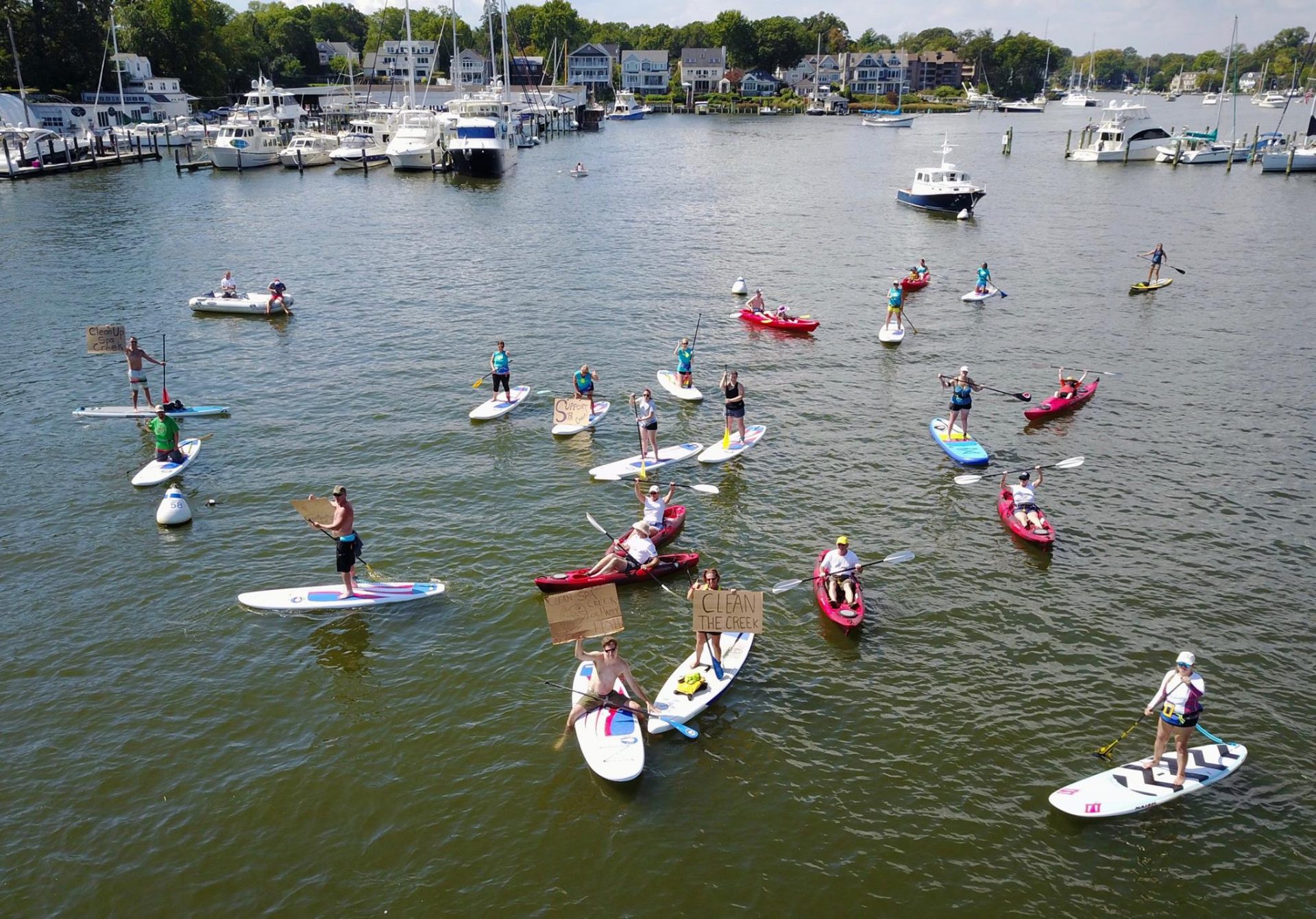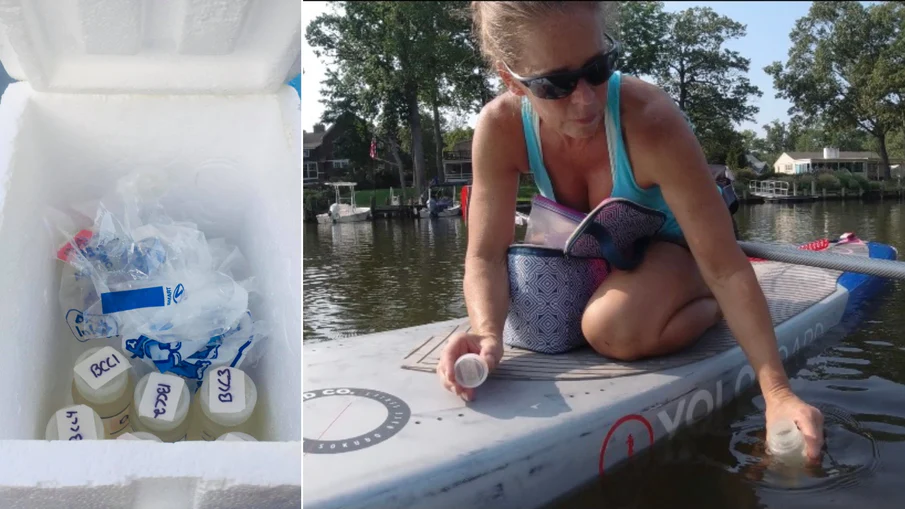While our social programs may be our most visible, it’s our environmental focus that connects everything we do. During the summer, you’ll easily spot us out on the water with the youth and veteran groups that we run, and that tends to be what draws the most attention. That said, water itself, and specifically our neck of the Chesapeake Bay, very much is the foundation upon which all of our other work is built. Which is why we are thrilled to have established an official partnership with Anne Arundel Community College (AACC) to maintain ongoing water quality monitoring of Back Creek, the flagship location of our parent company Capital SUP.
The Environmental Center at AACC has been operating for over 30 years, and they have a long history of water quality monitoring at various locations. Prior to five years ago, however, neither the Spa nor Back Creek in Annapolis were on their list. In 2017, Capital SUP co-founder and CEO Kevin Haigis enlisted the help of Spa Creek Conservancy (SCC) to begin their own water monitoring of Spa Creek. “The reason it started was because Capital SUP was running our kids camp, and I wanted to know if the water was safe for the kids to swim in,” said Haigis, who later joined SCC’s board of directors.

After organizing their first fundraiser – aptly named PaddleFest – Capital SUP had the means to finance a water testing program. Around the same time, Live Water Foundation was formed as the charitable arm of Capital SUP with water monitoring as its cornerstone. When Capital SUP moved their location from Eastport to the Ellen O. Moyer Nature Park on Back Creek in 2019, we expanded our efforts to include that area as well.
“The basic purpose of the testing that is done is to give the community information about the safety of water for swimming,” said Dr. Tammy Domanski, PhD., biology professor at AACC and head of their environmental department. According to Domanski, there are two general components of the testing: the first aspect involves testing for certain bacteria that would indicate a higher chance of swimmers getting sick if they came in contact with the water, whether it be a skin rash or a stomach issue. Concurrently, they run a number of other tests that observe the overall health of the watershed.
“When we test for total suspended solids, temperature, salinity, pH, dissolved oxygen – that tells us something about the long term health of any body of water,” says Domanski. That particular information is more useful to regulatory organizations that may deem whether or not an area is safe for development.

Once a week, the individuals tasked with the job spend all day collecting samples and recording data from a total of 15 different locations – four on Back Creek and 11 on Spa Creek. The water samples are taken back to the laboratory at AACC where they’re processed using various methods, with information on bacteria levels available within 24 hours and posted online. Nutrient levels take a few weeks to process and are also posted online when the results are obtained.
When viewing the results, Domanski says that the context of the information as well as an understanding of a particular area’s environmental patterns are of equal importance as a simple “good” or “bad” report. Based on guidelines developed by the Environmental Protection Agency, water is deemed either safe or not based on the concentration of a certain bacteria per 100mLs. That number is anything greater than 104 per 100mL, which is considered “red” or a no-go for swimming. Anything under 104 per 100mL is “green”.
Experts like Domanski urge swimmers to take into consideration the area they’re entering as well as – perhaps most importantly – their personal health. “It’s a continuum,” Domanski says, “and it depends on a lot of things. It depends on the health of the swimmer, the amount of interaction with the water, if you swallow it by mistake and how much you swallow. It really is a guideline and people have to use their own judgment.”
Additionally, certain areas of the Bay have better dilution and mixing and seem to naturally deal with less bacterial issues, just as, conversely, some areas struggle much worse. Understanding these environmental patterns as well as your own health, and using that information as the framework for whether or not water is safe for swimming is integral to limiting your personal risk.
We are extremely proud of the growth this program has had, and are confident that it will not only maintain but continue to improve thanks to the involvement of AACC and Dr. Domanski’s team of dedicated water monitors.
We have to include an additional thank you to Kevin Haigis for his eagerness to get involved in water monitoring. Domanski echoed our thanks, remarking that even though reporting bad bacteria counts could adversely affect Capital SUP, Haigis never shied away from involvement and in fact bolstered the cause. “He was always very, very invested in being a part of understanding water quality and helping to make it better,” said Domanski.
Where to find this information:
- Spa Creek Conservancy’s website, updated every week.
- AACC’s Operation Clear Water website, which has an interactive map and a link to a detailed spreadsheet.
- The Swim Guide, available as a website and as an application on your device.
The AACC EC and Spa Creek Conservancy are looking for volunteers interested in helping out with water monitoring after significant storms. Volunteers would be trained to visit three sites in Hawkins Cove to collect water samples that would then be analyzed at AACC. Volunteers would be contacted before a predicted storm to determine availability.
AACC EC is always looking for volunteers to help out with various water monitoring, underwater grass restoration and outreach projects around the county.
Email: [email protected]

0 Comments